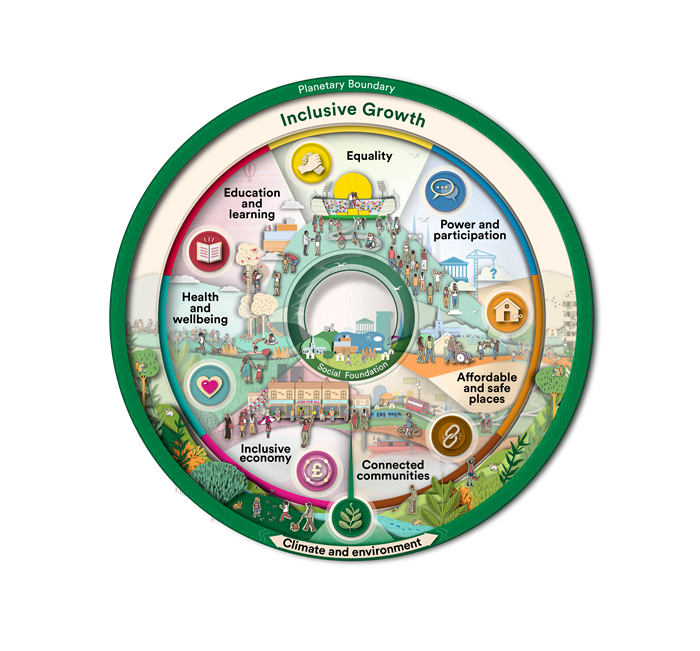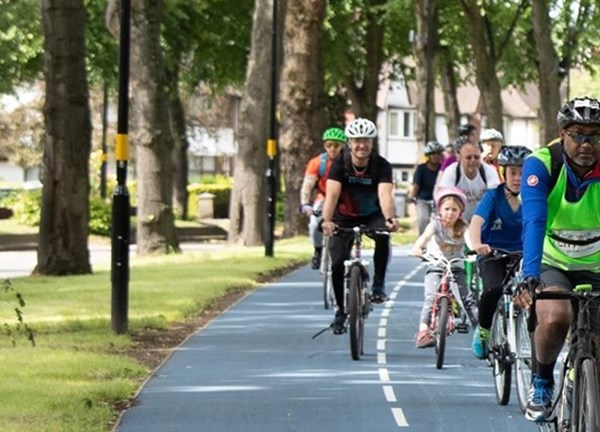Inclusive Growth Framework Fundamentals
Fundamentals
The inclusive growth doughnut proposes that our economy is only fit-for-purpose if it meets the needs and aspirations of people whilst being regenerative of the environment.

How the Framework is structured
The Inclusive Growth Framework has eight fundamentals. One fundamental focused on planetary boundaries:
- Climate and environment
And seven human-focused fundamentals:
- Inclusive economy
- Power and participation
- Affordable and safe places
- Connected communities
- Education and learning
- Health and wellbeing
- Equality
The eight fundamentals are set out as follows:
- summary – a description of the fundamental
- considerations – Understanding what good looks like and how we achieve it
- missions – What success looks like and means in practice
- metrics – How we measure success
The aim of the doughnut economics model is creating balance – how do we make sure people can thrive without over-using natural resources? At present, a tension exists -we are breaching the planets ecological system to meet human needs, but this doesn’t need to be the case.
The fundamental focused on the planetary boundaries – climate resilience – is in tension with the other seven: if we are overshooting planetary boundaries, it means the things we are doing to meet human needs will ultimately undermine the planetary ecosystem that allows them to thrive, and as such, need to change. The counterfactual is also true – it is possible to bring ourselves within planetary limits in a way which does harm to people; that also needs to be avoided.
This tension – and the tensions between the seven human-focused fundamentals – are a helpful guide to how we can create inclusive growth. For example, knowing that people living in poverty are also using the least carbon shows people making policies and investments associated with carbon reduction that they need to address the poverty alongside that effort, as they will otherwise risk worsening that poverty.
Overshoot and shortfall
At present, we are over-using natural resources (overshoot) and we are not meeting the seven fundamentals of our people (shortfall). A balanced doughnut, where neither planetary nor human boundaries are transgressed is where we would like to be.

Inclusive Growth Framework
